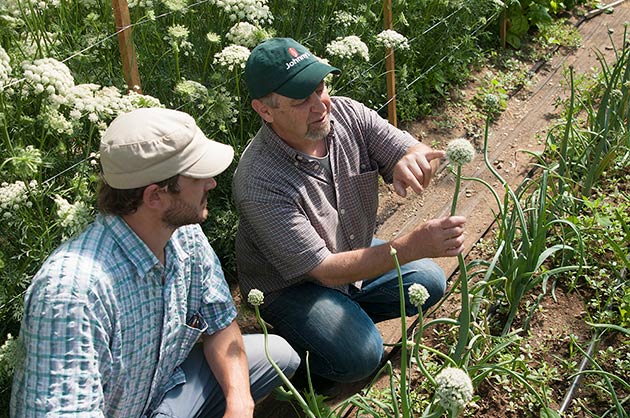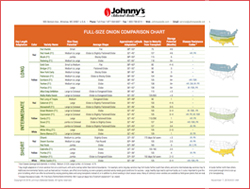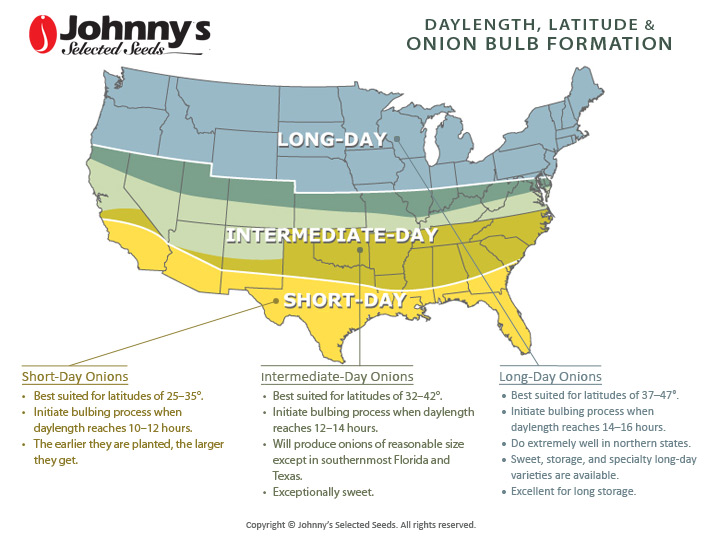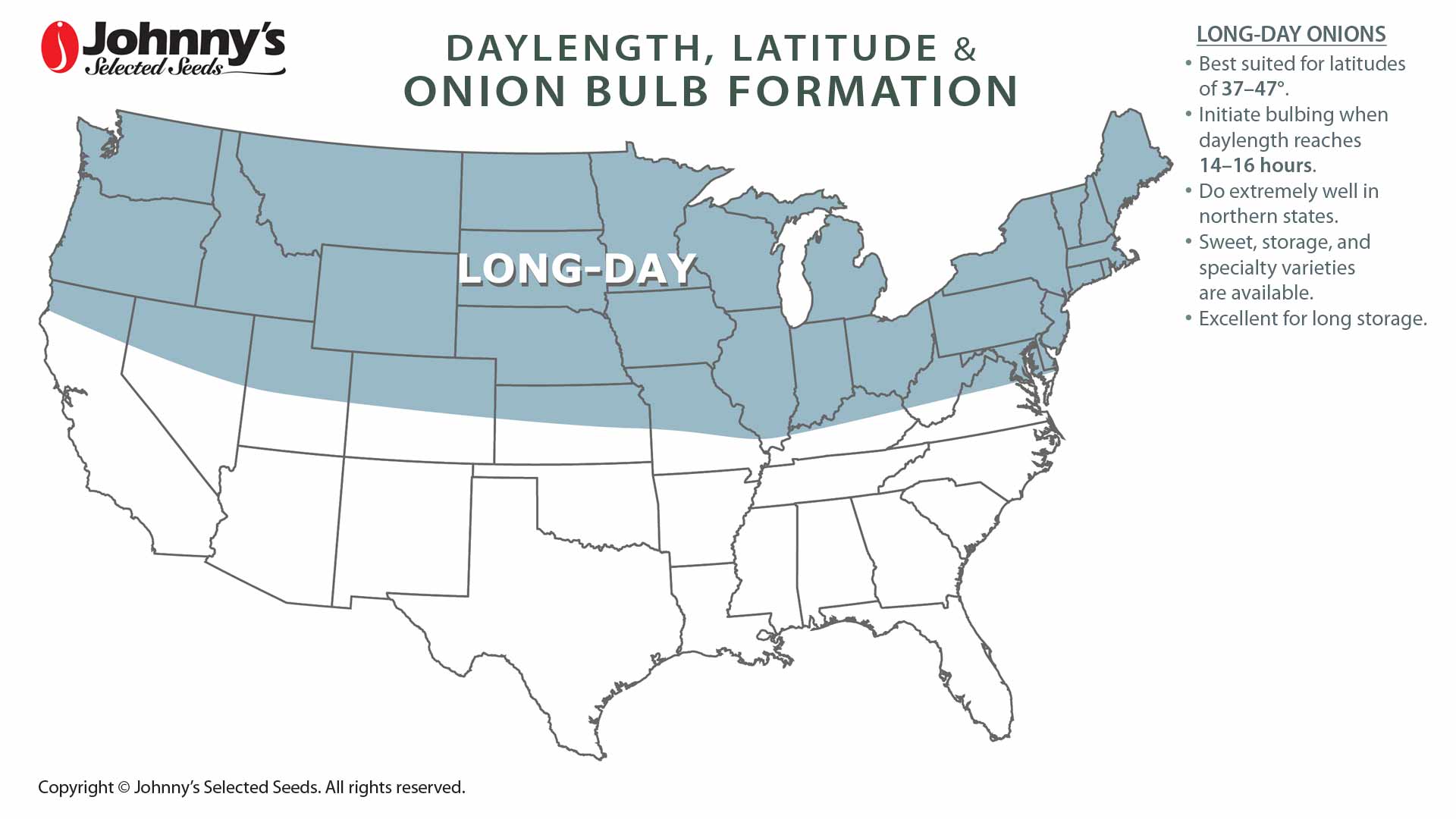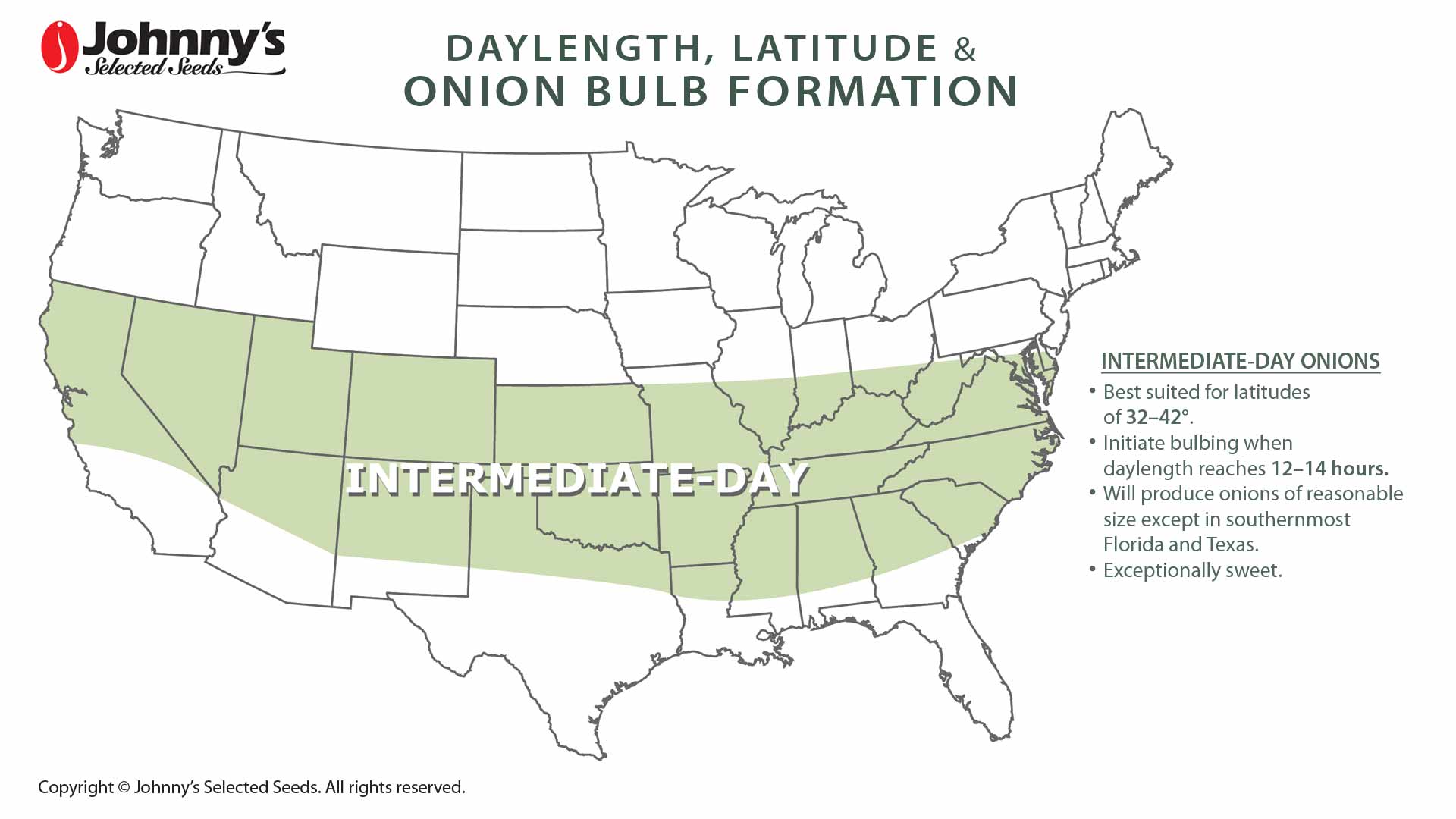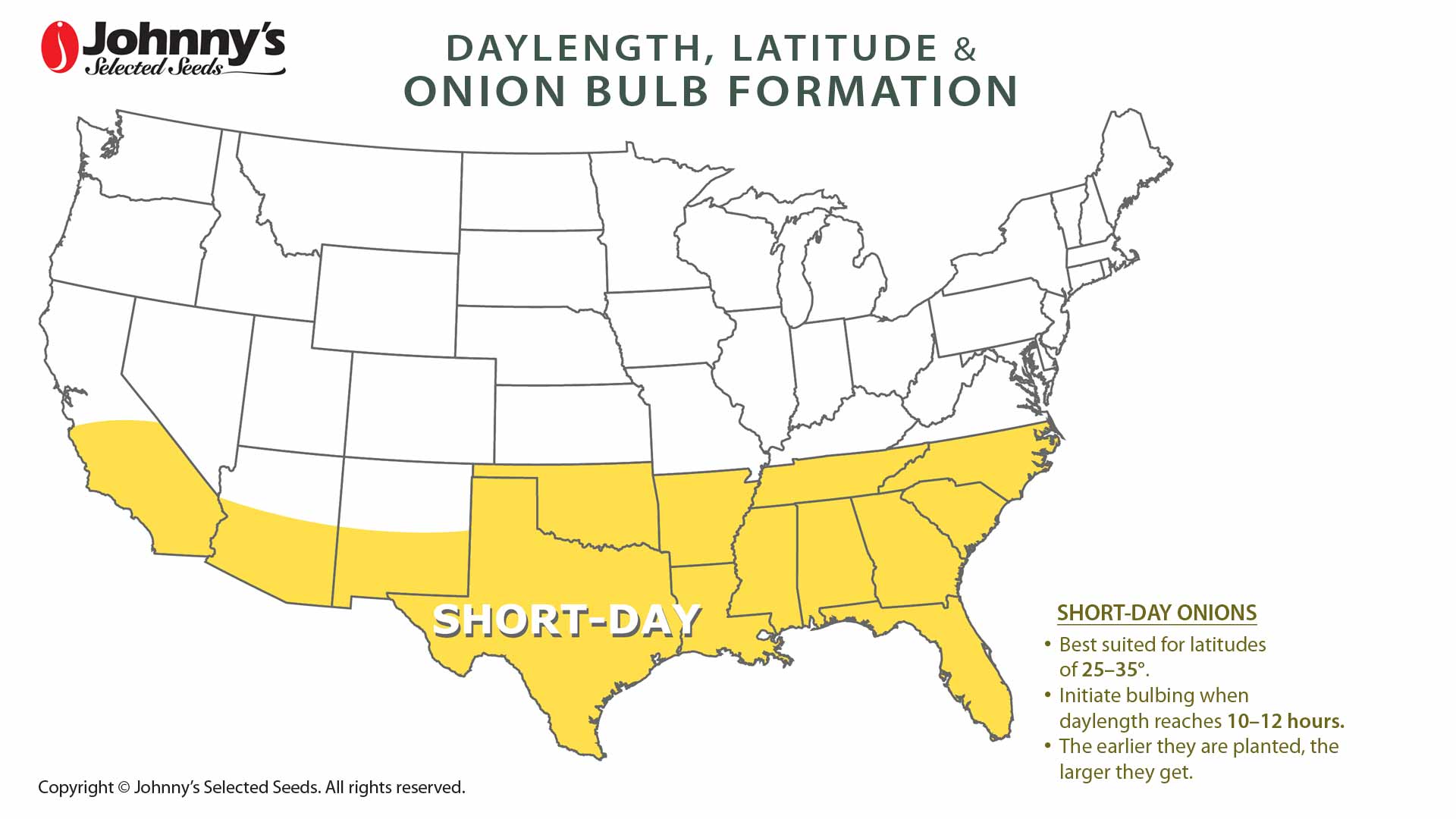- Onions - Instructions for Growing from Sets | Tech Sheet (PDF)
- Onion Sets | Key Growing Information
- Pelleted Onions | Key Growing Information
- Onions | Key Growing Information
- Video: 4 Great Reasons to Grow 'Blush' Onion
- Overwintering Onions from Seed | Johnny's Selected Seeds
- Onion & Leek Production from Transplants | Tech Sheet (PDF)
- Full-Size Onion Varieties | Comparison Chart (PDF)
- Map of Long-Day, Intermediate-Day & Short-Day Onions
- Bunching Onions | Key Growing Information
- Winter Growing Guide | Part 6: Recommended Crops & Varieties
- Classic Storage Crops | Post-Harvest Handling & Storage Guidelines
- Cipollini, Mini & Specialty Onions | Key Growing Information
Map & Key Features of Short-, Intermediate- & Long-Day Onions
Although temperature and soil fertility also influence onion growth, it is light that acts as the primary driver of bulb initiation. As soon as days reach a certain number of hours in length, onion plants begin to switch their energy from leaf formation, up top, to bulb formation, down below.
The amount of daylight needed for an onion plant to begin forming a bulb varies by variety. Relative to the hours of daylight needed, latitude, and when they begin to form bulbs, onion varieties fall into 3 main groups:
Overwintering Onions from Seed • Recommendations from Johnny's Overwintering Trial Article
'Forum' Onions • Instructions for Growing from Sets Tech Sheet PDF
Onions & Leeks • Instructions for Growing from Transplants Tech Sheet PDF
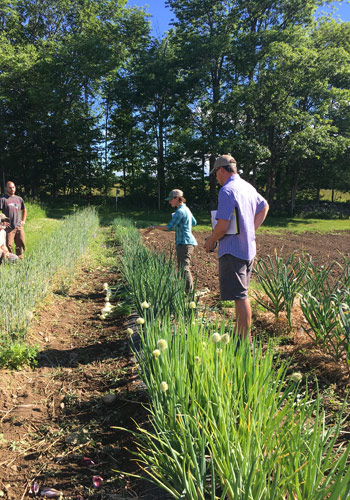
On this page we've listed the distinguishing characteristics for each type. Check your latitude and consult our onion comparison charts to choose the varieties best adapted to your needs and your region.
Key Features of Long-Day, Intermediate-Day & Short-Day Onions
Daylength adaptation of onion varieties falls on a continuum, with some overlap rather than distinct boundaries. For example, some long-day varieties may form bulbs farther south than others, and some intermediate-day varieties may form bulbs farther north than others.
Additional environmental factors, such as heat and soil moisture, can affect onion bulbing, so even a properly selected variety needs good conditions for success. Large, healthy tops lead to optimum bulbs, so it is also important to give the onion plant enough time to size up prior to bulbing. Days to maturity can vary widely depending on variety and seasonal culture. Adequate time can often be achieved by varying planting dates and using transplants instead of, or in addition to, direct-seeding in short-season areas. Many of Johnny's onion varieties are available as field-grown plants that are ready for transplanting.
LONG-DAY ONIONS
- Best suited for growing at latitudes of 37–47°.
- Initiate bulb formation at 14–16 hours of daylight.
- Grown mostly at northern latitudes (Zone 6 and colder).
- Usually planted in late winter to early spring, but some varieties are suitable for overwintering.
- This type includes sweet, specialty, and long-storage varieties.
- View all Long-Day Onion varieties…
INTERMEDIATE-DAY ONIONS
- Best suited for growing at latitudes of 32–42°.
- Initiate bulb formation at 12–14 hours of daylight.
- Produce best in Zones 5 and 6, but are adaptable and will form bulbs in any growing zone.
- Usually planted in spring at central latitudes; planted in early spring at northerly latitudes; planted in fall in mild winter climates.
- Usually very sweet.
- View all Intermediate-Day Onion varieties…
SHORT-DAY ONIONS
- Best suited for growing at latitudes of 25–35°.
- Initiate bulb formation at 10–12 hours of daylight.
- Require mild winter climates (Zone 7 and warmer).
- Usually planted in fall and mature in late spring.
- View all Short-Day Onion varieties…
Learn More
- Full-Size Onion Varieties • Comparison Chart Downloadable, Printable PDF
- Overwintering Onions from Seed • Recommendations from Johnny's Overwintering Trial Article
- 'Forum' Onions • Instructions for Growing from Sets Tech Sheet PDF
- Onions & Leeks • Instructions for Growing from Transplants Tech Sheet PDF


